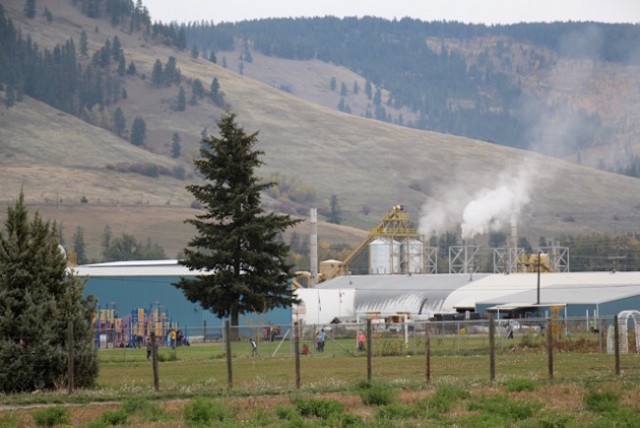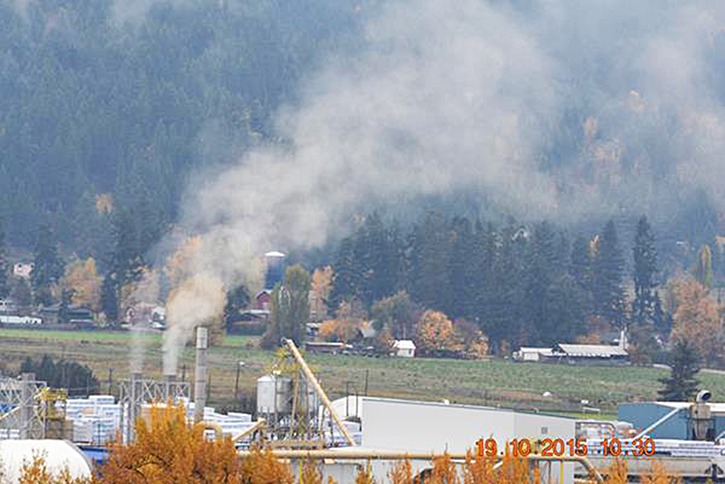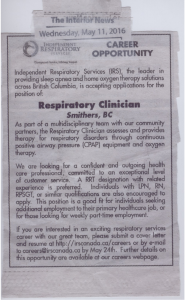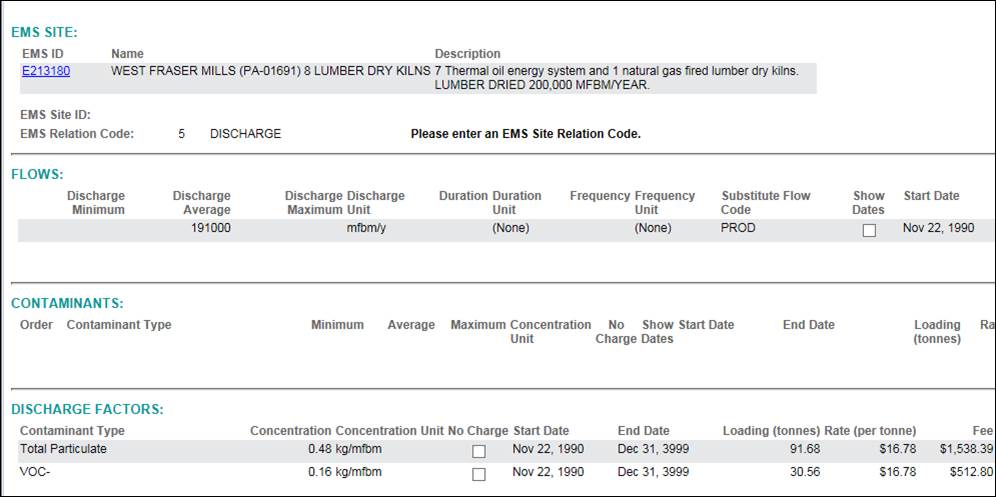Category Archives: Uncategorized
Appealing Lavington

Tucked away at the end of this story at Castanet is, "Three Lavington families have filed an appeal against Pinnacle's air discharge permit which is expected to be heard by the environmental appeal board in April, 2016." Looks like this will happen mid-April in Vernon.
Residents fuming over pellet plant

Lavington residents are upset over not only what they can see coming from the Pinnacle Pellet Plant stacks in addition to steam, but the particulate matter which they can’t see.— image credit: Submitted photo 12 by Jennifer Smith - Vernon Morning Star posted Oct 28, 2015 at 1:00 AM Several Lavington residents say their worst fears are coming true.
Despite all their protests and warnings, the Pinnacle Pellet Plant is up and running next to Tolko and near neighbouring subdivisions, as well as Lavington Elementary School.
more at the Star
Burns Lake mill fined $56,000 over pellet plant explosion that injured three
BURNS LAKE — British Columbia's workers' compensation authority has fined a Burns Lake company $56,000 in the wake of a 2014 explosion at a wood pellet plant that injured three workers.
WorkSafeBC imposed the penalty against Pinnacle Renewable Energy Inc. after an investigation report concluded the company failed to maintain safe working conditions and to exercise due diligence.
Pinnacle fell short on providing adequate safety information, training and supervision, the report found.
more at the Vancouver Sun
It'll be Smithers' turn soon...
reducing air pollution??
Dr. Michael Brauer of UBC is lead author of a new study of the global burden of disease, focusing significantly on the adverse health effects of air pollution, reported here in the New York Times.
Founding head of the UBC School of Public Health, Dr. Brauer has this to say about air pollution, "Air pollution is the fourth-highest risk factor for death globally and by far the leading environmental risk factor for disease." He went on to note the sunny side - "Reducing air pollution is an incredibly efficient way to improve the health of a population."
More information about the study is here.
Dr. Brauer is well known in Smithers from his studies related to wood stoves, linked here.
what about PIR?
The context in which emissions take place is very important. Smithers is by no means a pristine airshed. Immediately upwind of the main populated part of town is Pacific Inland Resources, a West Fraser sawmill. I recently had occasion to discuss their emissions with a friend and was asked to put my thoughts in writing. Below is my rant, with a link to the PIR Discharge Table.
Here’s the gist of my rant this morning (January 19, 2016) about air pollution in Smithers.
The regulatory scheme consists in part of the Province issuing air emissions permits to major emitters (read “polluters”). The Environmental Management Act authorizes the Minister or delegate to issue permits. I have a copy of PIR’s current permit here: PIRsPermit.
A preliminary clause in the permit says that the permit authorizes the discharge of air contaminants to the air. “Contaminant” isn’t defined in the permit, but is in the EMA. It is a substance that harms or has the capacity to harm a person. So the harm done by authorized emissions is in view at the earliest regulatory stage – an air emissions permit is permission to injure people. The people affected are easy to identify and a huge amount of clinical and epidemiological work has gone into identifying susceptibility and harm done, mechanisms and so on.
If I were to pursue a polluter in court, in a tort action (sue the bastards), I would be faced with the fact that the Province, having issued the permit, will defend it, that is the Ministry of Attorney General will fight the action against my claim. So would the polluter. So I’d have to have very deep pockets to pursue the case in the first place, and the polluter would be sure to claim due diligence in carrying out the permit terms – in practise this is a pretty good defence. This works in defending a permit at the Environmental Appeal Board, too; we recently saw that at the Alcan SOx fandango in Kitimat.
So one branch of the Province’s tactical distraction of the population at large is to noisily fix the blame elsewhere, for example on woodstoves. You can easily hear that wood stove pollution is the number one problem and that we need look no further for the source of the adverse effects of smoke pollution – “we have met the enemy and he is us” as Walt Kelly said. It’s pretty much bullshit but needs better data.
So I took the current permit limits for PIR and compiled the data into a table that I’ve included here. I wanted to compare mill emissions limits with tested wood stove emissions. Wood stoves are rated by the EPA and CSA for their emissions of total solids per hour. I take it that this is Total Particulate Matter, the term used in the permit limits. So an EPA/CSA certified stove typically has emissions of 4 grams per hour. PIR’s emissions limits (excluding the kiln, an important source) sum to 56492 grams/hour. So this would be 14000 nice clean stoves. Not likely. An old belcher might have emissions of 40 grams/hour, so that would mean there’d have to be 1400 old beater stoves like this. Running 24×7 for 365 days a year. Not credible.
Maybe it’s time to check out the PIR Discharge Table (above), why not do that now.
If there’s an error in my arithmetic I’d be interested in hearing about it so please do speak up. I have not done this calculation for NEWPRO’s current permit because it’s a PITA and unlikely to be applicable and I don’t know what new permit limits if any will look like. The speculative figures in SLR’s 2015 report are of unknown relevance.
I have examined tax data, here:
for the kiln and seen the estimated VOC output from the kiln but don’t have a substantiated conversion factor. It will certainly increase the total though.
It is important to note that no audit is ever done on PIR’s (or indeed on anyone’s) compliance with emissions limits. There is a legal requirement to report to the feds under the National Pollutant Release Inventory regulation. Self-reported data has a tendency to understate the matter and in this case report under by an order of magnitude, with unknown sources and accuracy.
Scott Vaughan, Commissioner for Sustainability and the Environment, is an officer of parliament and a couple of years ago undertook a review of NPRI data issues and concluded that it was shit. Environment Canada agreed.
So there isn’t any reliable way to do source apportionment in Smithers from any data sources I’m aware of and there is zero accountability from the Province or the polluters, just distraction. We can and do know ambient levels and know they are high. I’m not aware of any path forward that offers a realistic hope of reductions.
There was a discussion at the CRB that Smithers pollution is in Smithers and so is outside the LRMP. Historically speaking the LRMP is a project of the CRB, not its raison d’être and the no-municipality issue may be countered by observing that PIR is situated outside the municipality. The pollution, of course, goes wherever the wind blows, mostly into town.
old smokey rides again! yeeehaaa!
You just can’t make this stuff up! Smithers Council received a notification that current levels of air pollution constitute a public health hazard, so they notify the Chief Medical Health Officer of the hazard and then… Guess!!! They voted to make it worse!! Isn’t that original? Clever? Diligent? Protective?
Well, actually, original, I hope, clever, no, diligent, no, protective, no. Still one out of four isn’t bad…
There’s more. There is a (inadequate, feeble) national standard for ambient PM2.5. The Central Interior Air Zone Report issued by the Province clearly shows that Smithers isn’t meeting that standard. Even as things stand now. So adding a new source will do what??? Make it better?? Make it worse?? Guess!!
is this even legal?
No.
The Province of BC, like all Canadian jurisdictions, is bound by the Constitution Act of 1982. And one part of the Act is the Charter of Rights and Freedoms. And section 7 of the Charter says, ” Everyone has the right to life, liberty and security of the person and the right not to be deprived thereof except in accordance with the principles of fundamental justice.”
The emissions permit for NEWPRO authorizes the discharge of air contaminants. Air contaminants are not defined in the permit but are in the enabling legislation, the Environmental Management Act, which has this to say –
“air contaminant” means a substance that is introduced into the air and that
(a) injures or is capable of injuring the health or safety of a person,
(b) injures or is capable of injuring property or any life form,
(c) interferes with or is capable of interfering with visibility,
(d) interferes with or is capable of interfering with the normal conduct of business,
(e) causes or is capable of causing material physical discomfort to a person, or
(f) damages or is capable of damaging the environment;”
Well since the Supreme Court has clarified that section 7 includes the right to health, and since stress is included (see Blencoe vs BC) we can see that issuing a permit that authorises harm to identifiable people is contrary to this Charter right. Courts routinely strike down laws that conflict with the Charter.
It’s time this one went to court.
those pesky doctors, always grouchy
The Canadian Medical Association Journal, in its July 20th, 2015 editorial, titled “Adopting global guidelines for air pollution: protecting the health of Canadians” says a lot about laxity of standards that ought to aim to protect the health of the helpless. Children, carcinogenic, particles, VOCs all discussed. Pretty good read. Mirrored here.
Fave quote, “In 2008, it was estimated that more than 20,000 premature deaths related to outdoor air pollution occur each year in Canada. Yet, current Canadian standards for air pollutant levels lag behind WHO guidelines.”
The 2008 report here. The CBC story is pretty good too.
does it matter if there’s a bit more smoke?
Does it actually make any difference whether this proposal goes ahead? It doesn’t sound like very much smoke after all…
A lit match in a the street isn’t much to get excited about but the same match lit in a dynamite factory will get a lot of attention.
So is it maybe the case that Smithers is already polluted, even without
NewPro? Yes Virginia, there is air pollution in Smithers, even without the pellet plant.
How can we know this? The wood domestic heat people don’t say how much they burn (but they have in the past, there’s an estimate on that) but the permit holders do.
If we check out our favourite favourite sawmill here we can see what they say they put out in 2014. Look down the left side of the page for discharges to the air of cadmium, manganese, lead, methanol (no, really, I’m not making this up) and last but not least selenium. As the twitterati say, WTF?? and moreover how much? Well methanol for example is 9.8 tons. Is that a lot? does it matter? what’s wrong with breathing methanol? or cadmium? Um, Well, according to IARC, here (NB 35 page .pdf) is the list that shows cadmium to be a type 1 carcinogen – i.e., it is known to cause cancer in humans. There’s lots of doomer porn here for anyone who wants to follow up.
Well is this relevant? Sure it is. Even without the putative new pollution levels from NewPro (or whomever) we have a bad situation, adding more will make matters worse.


